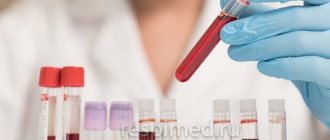Blood clotting disorders are a group of pathological conditions characterized by malfunctions in the hemostatic system. It consists of keeping blood in a liquid state, stopping bleeding in cases where the walls of blood vessels have been damaged, and also dissolving blood clots that have already fulfilled their function. The reasons may be different: as a rule, they arise due to a lack of one or several factors at once or the appearance of their inhibitors in the blood. They provoke a decrease in the ability of blood to clot and the development of serious and potentially life-threatening diseases.
The Department of Hematology at CELT offers diagnosis and treatment of blood clotting disorders in Moscow. We employ leading domestic hematologists, whose qualifications are sufficient to accurately diagnose and carry out effective treatment according to international standards. They are helped in this by a powerful diagnostic and treatment base and modern gentle techniques. You can find out the approximate prices for our services in the price list in the “Services and Prices” section of our website. We recommend checking the numbers with our information line operators.
Bleeding disorders: causes
Coagulation hemostasis is a complex of complex biochemical processes that are triggered by tissue platelet factor and regulated by many blood coagulation factors. When it works correctly, it ensures that the damaged area of the vessel is blocked by a blood clot, which is called red because it contains red blood cells. About forty physiological active substances take part in the process. Any deviations in the balance of coagulation factors lead to disruptions in the process. In addition, platelet count plays an important role.
| Groups of violations | Etiological factors |
| Congenital/genetic | Coagulopathies that are inherited and caused by a lack of plasma coagulation factors are hemophilia; Hemorrhagic diathesis - angihemophilia, which is provoked by a deficiency of antihemophilic globulin; Disseminated intravascular coagulation, which develops as a result of hyperstimulation and deficiency of reserves of the hemostatic system; Thrombocytopenic purpura - occurs due to a deficiency of platelets due to disorders of the immune mechanisms. |
| Purchased | Pathological conditions that initiate a decrease in the level of fibrinogen or platelets in the blood:
|
| Autoimmune | Accelerated destruction of platelets in the spleen and a decrease in their number in the blood. |
Poor preparation leads to blood being unsuitable for testing
Almost every person, when an illness appears, is faced with a blood test from a vein. Indeed, blood from a vein allows us to learn about most of the processes occurring in the human body. Thanks to this material, the doctor is able to immediately find out by deciphering the analysis result whether there is an inflammatory process in the body and what treatment methods will be more effective in this situation. But in order to obtain accurate information, blood must be donated in accordance with all rules.
You should prepare for the test a couple of days before the appointed day. During this period, foods containing a high percentage of fat, as well as alcoholic beverages, are excluded from the diet. When donating blood from a vein, a person must have an empty stomach.
If these requirements are not met, there is a high risk of not only obtaining an incorrect result, but also the inability to conduct a blood test due to hemolysis.
For reference. Hemolysis - blood clotting, is a natural process that necessarily occurs with every red blood cell, the existence of which is about 120 days. After this period of time, every red blood cell in a person’s blood ends its existence by hemolysis.
What hemolysis is is often learned by the patient only when it turns out that the analysis failed due to blood clotting. Hemolysis is a natural process in which red blood cells undergo destruction, during which hemoglobin is released. It is this process that provokes blood clotting. You can avoid such troubles with the analysis by adhering to the preparation rules applied before taking the analysis.
And although most often the causes of hemolysis are hidden in improper preparation for the test, there are other reasons that can make blood unsuitable for testing.
Bleeding disorder: symptoms
The clinical manifestations of the diseases listed above are similar, but appear in different combinations and with different intensities. Hemorrhagic syndrome is represented by the following:
- Hemorrhages into the skin and tissue;
- Bleeding of gums and other mucous membranes;
- Formation of bruises even with light blows and compressions;
- Systematic spontaneous nosebleeds;
- Intense menstruation in women;
- Prolonged bleeding even with minimal damage to small blood vessels;
- Bleeding into muscle and joint tissues, initiating necrosis.
Signs of thrombohemorrhagic syndrome due to bleeding disorders:
- Hemorrhagic rash, bruises, hematomas;
- Intense bleeding from injection sites and wounds;
- Paleness of the skin, its coldness;
- Swelling of the gastrointestinal tract;
- A combination of necrotic foci and multiple hemorrhages.
Coagulation indicators and their norm
Bleeding time is the length of time during which a clot forms when the integrity of the skin is broken. This is a basic study that evaluates the function and condition of the vessel walls. In a healthy person, venous blood flows within 5 to 10 minutes, capillary blood flows within no more than 2 minutes.
- coagulation protein, which is an important component of thrombin; normally it is 78-142%.
Thrombin time, or aPTT, is the period of time during which blood clotting occurs; it is 11-17.8 seconds.
Fibrinogen is a plasma protein responsible for the formation of a blood clot. Its normal content is 2.00 - 4.00 g/l; - 1.25-3.00 g/l.
Antithrombin is a specific protein that ensures the resorption of a blood clot.
Bleeding disorders: diagnosis
Diagnosis of diseases associated with blood clotting disorders by CELT hematologists involves comprehensive blood tests. They are necessary in order to find out the following parameters and factors:
- Blood clotting time;
- Speed of coagulation process;
- Activated clotting time;
- The rate of appearance of fibrin;
- The presence of a deficiency of plasma coagulation factors;
- Other.
In order to assess the condition of the spleen, intestines, liver, and brain, X-ray studies, ultrasound scanning and magnetic resonance imaging are performed.
What is this disease
Blood consists of many components: proteins, platelets, red blood cells, fibrins and others. It is responsible for the delivery of nutrients and oxygen to all internal organs and tissues.
In order to prevent serious blood loss due to vascular damage, a process is provided for the formation of blood clots when tissue factor enters the bloodstream. If this process is disrupted, this indicates the presence of a disease.
Poor blood clotting is associated with a lack of certain enzymes. There is a decreased production of platelets. This pathology is dangerous to human health and life. If the damage to the blood vessels is severe, severe blood loss can lead to death.
Depending on the provoking factor, there may be several answers to the question of what the disease is called:
- If the pathology is associated with a lack of fibrinogen in the blood, then the coagulation disorder is called fibrinopenia.
- When a hereditary factor plays a key role, the disease is usually called hemophilia. Mostly men suffer from this problem.
- The disease caused by a lack of platelets is called thrombocytopenia.
These diseases have similar causes and are characterized by the same symptoms.
Bleeding disorder: treatment
The development of treatment tactics by hematologists for CELT is based on diagnostic results and individual patient indications.
| Disease | Features of treatment |
| ICE | Treatment will be effective if it is diagnosed at the initial stages of development. A patient with severe symptoms is hospitalized and, if necessary, given artificial ventilation and active antishock therapy. If clinical manifestations are minimal: efforts are directed towards the treatment of underlying diseases and correction of hemodynamics, along with the elimination of disturbances in the functioning of the affected internal organs. Methods used:
|
| Thrombocytopenic purpura | Treatment is not indicated for an isolated form that occurs without hemorrhagic syndrome. With moderate severity of the pathology, patients with a high risk of bleeding are prescribed drug therapy. In the process they use:
In patients with a chronic form and frequent severe bleeding into internal organs, the spleen is removed and cytostatics are prescribed. |
| Angiohemophilia | With minimal clinical manifestations and moderate hemosyndrome, regular treatment is not required. It is advisable in situations where there is a high risk of bleeding: during obstetrics, with traumatic injuries, before operations and dental procedures. This ensures the required level of deficient coagulation factors, which eliminates the negative consequences of such procedures. |
| Hemophilia | It is impossible to completely cure this disease, so patients are prescribed replacement therapy using concentrates of blood clotting factors VIII and IX. When selecting their doses, the severity of the pathology, as well as the severity and type of bleeding are taken into account. Treatment is carried out as a preventive measure and on demand. To do this, concentrates of coagulation factors are administered, which eliminate the development of bleeding. Any surgical interventions in such patients are performed using hemostatic therapy. |
The Department of Hematology at CELT welcomes candidates, doctors and professors of medical sciences with decades of experience in practical and scientific work. You can make an appointment with them online, through our website or by contacting our operators. Our clinic is multidisciplinary and has a urology department, where you can undergo laser lithotripsy and get rid of kidney stones.
At CELT you can consult a hematologist.
- Initial consultation – 3,500
- Repeated consultation – 2,300
Make an appointment
By making an appointment with a hematologist, you can get a comprehensive consultation. The doctor is competent to treat various blood diseases, most of which can be identified in the early stages and prescribe timely treatment to cope with the disease quickly and easily.
How to avoid
When collecting blood for analysis, it depends a little on the patient. The main thing is to choose a clinic that has a reliable reputation. In case of hemolysis of the sample, it can be taken again. But few people would be pleased to lose time, and in some situations, money, due to poor quality of service. It’s even worse if hemolysis occurs during blood sampling from an infant or child. The analysis procedure itself, especially from a vein, causes fear in children. It will be unpleasant for parents to watch the suffering of a baby whose veins are pierced several times.
To prevent such a situation, it is necessary to show interest in the working conditions of medical personnel. You should ask where and when the analysis will be carried out, how it will be transported and under what conditions it will be stored.
To avoid hemolysis of the blood sample being taken, as well as the cost of personal time and money for repeated analysis, it is best to take the procedure seriously and take care of the sterility of the instruments. It is a good idea to have a syringe, sterile gloves and a test tube with you. It is a good idea to personally control the addition of the preservative to the test tube.
Before choosing a private clinic for a blood test, you need to read reviews about its work. Frequent complaints from patients about blood clotting when selected for analysis in a particular laboratory indicate that it is better to go to another institution.
Unscrupulous management of a medical institution may specifically prescribe repeated procedures in the hope of receiving money for them again. In these cases, you must demand a refund and contact another laboratory.
Enzyme analysis of red blood cells
In the absence of glucose-6-phosphate dehydrogenase, glutathione reduction occurs. Red blood cells (their membrane) are susceptible to damage from reactive oxygen species.
Gama test
The Gama test is a diagnostic test (screening) for paroxysmal nocturnal hemoglobinuria (NPH). Red blood cells are incubated in serum acidified to pH 6.2, the acidic environment activates complement and pathological red blood cells are susceptible to hemolysis.
This method identifies proteins associated with the cell membrane and involved in the following processes:
- protection against the lytic effects of complement;
- The 2 proteins (MIRL and DAF) are designated according to the antibodies with which they specifically interact, CD-55 and CD-59.
(1 rating, average 4 out of 5)
Threat to pregnant women
Thrombophilia often occurs in expectant mothers due to complications that can occur during pregnancy.
This disease can cause miscarriage.
In pregnant women, the tendency to thrombophilia sharply increases, and if a woman has blood thickening before pregnancy, the disease intensifies while carrying a child. As a result, late toxicosis may occur, the placenta may detach, and miscarriage syndrome may develop. Premature labor pains may occur, and in some cases it ends in the death of the fetus.
All this happens due to the fact that the unborn child is fed through the placenta, which has many blood vessels. With thickened blood, it does not receive the necessary nutrients and oxygen, which leads to slower growth and development. To relieve these problems, doctors use blood thinners. They are given to women by injection.
Impact on the analysis result
Hemolysis can interfere with blood test determinations by releasing substances from red blood cells into the plasma or creating analytical interference.
With the breakdown of red blood cells, substances penetrate into the plasma that have a different appearance in the extracellular fluid than in the intracellular content of red blood cells. These substances can significantly affect the results when determining the analyte in the blood, since their concentration in erythrocytes is several times higher than in plasma (blood serum).
Plasma dilution
The intracellular fluid content of blood cells dilutes the concentration of the analyte contained in the plasma. We are talking, in particular, about glucose, bilirubin, Na and Cl.
Increased blood clotting during pregnancy
While in a state of pregnancy, the female body undergoes a number of cardinal physiological (not pathological) changes, which are reflected in the blood coagulation system in the form of inhibition of the anticoagulant blood system and activation of the coagulation system. These changes begin to be noted from the second trimester of pregnancy (from the 4th to 5th months) and play a vital protective role for both the mother and the child. Changes in the hemostatic system during pregnancy are due to the fact that the blood supply to the site of attachment of the placenta to the uterus is very intense and the hemostatic system is adjusted in such a way as not to cause thrombus formation in the uterus during pregnancy, as well as to ensure rapid stoppage of bleeding during labor and immediately after it.

Vigilant monitoring of the hemostatic system during pregnancy is vital and is achieved by regular blood clotting tests. Attentiveness to the doctor’s prescriptions and regularly taking tests to diagnose the state of the blood coagulation system is necessary in order to, on the one hand, timely detect pathologically increased blood coagulation and prevent possible placental insufficiency, and on the other hand, assess the possibility of stopping bleeding by the body’s own forces in order for childbirth passed without threat to the mother's life.
Expectant mothers who have risk factors should pay particular attention to the state of the hemostatic system:
- Pregnancy over 40 years of age;
- Pregnancy under the age of 18;
- Diabetes;
- Diseases of the kidneys, liver, cardiovascular system;
- The presence of hereditary diseases in the pregnant woman, father and close relatives;
- Difficult sanitary and living conditions for the mother;
- Frequent stress.
Despite the fact that bearing a child is not a disease, but refers to a physiological condition, a pregnant woman and her immediate environment must be attentive to the doctor’s prescriptions, follow all recommendations, carefully monitor the health of the expectant mother and in no case self-medicate.


![Table 4. Major muscular dystrophies accompanied by increased CPK levels [41]](https://ddpskov.ru/wp-content/uploads/tablica-4-osnovnye-myshechnye-distrofii-soprovozhdayushchiesya-povysheniem-urovnya-kfk-41-330x140.jpg)






